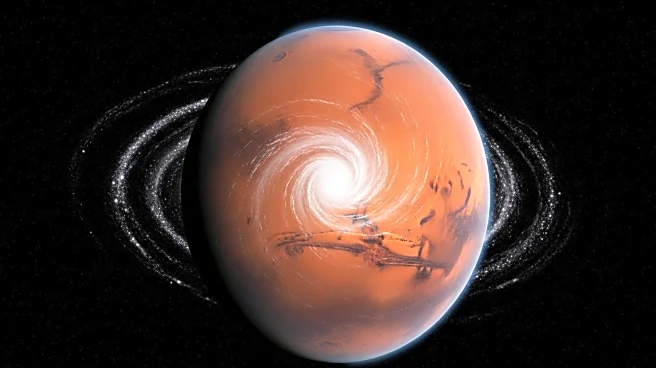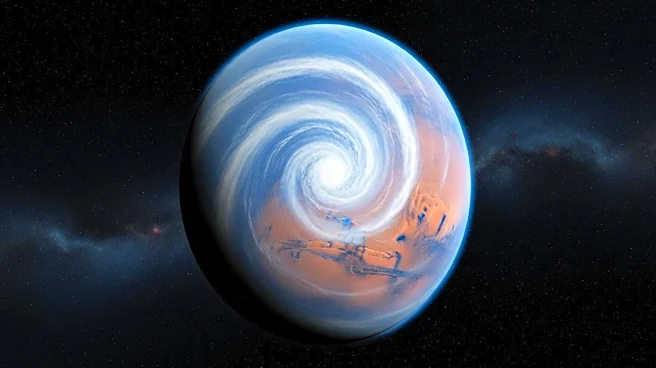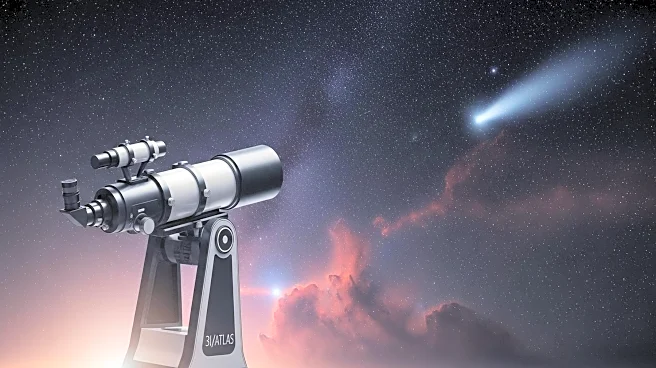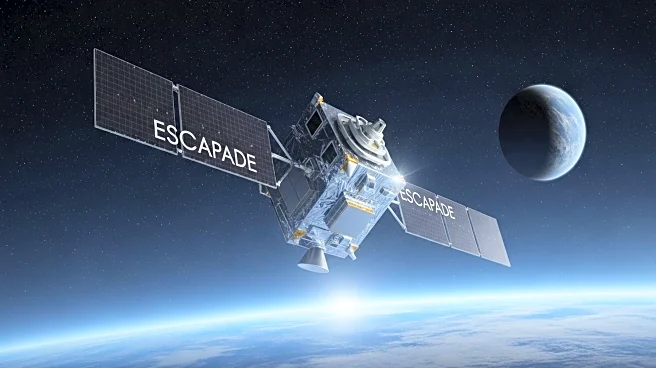What is the story about?
What's Happening?
Planetary scientists have discovered a seasonal ozone layer within Mars' polar vortex, characterized by significantly lower temperatures compared to the surrounding atmosphere. This phenomenon was observed using data from the ExoMars Trace Gas Orbiter and Mars Reconnaissance Orbiter. The extreme cold within the vortex leads to ozone accumulation due to the freezing out of water vapor, which typically destroys ozone. The study provides insights into Mars' atmospheric chemistry and its evolution, including the potential past presence of a protective ozone layer.
Why It's Important?
Understanding the Martian ozone layer offers valuable information about the planet's atmospheric chemistry and its historical changes. This research could inform future missions to Mars, aiding in the development of strategies for potential human exploration. The findings also contribute to comparative studies of atmospheric processes on Earth and Mars, enhancing our knowledge of planetary atmospheres and their evolution.
What's Next?
Further observations and analysis are expected to deepen understanding of the Martian polar vortex and its impact on atmospheric chemistry. Researchers will continue to study the conditions that allow ozone to build up during the polar night, potentially revealing more about Mars' atmospheric history and its implications for future exploration.
Beyond the Headlines
The discovery of a seasonal ozone layer on Mars highlights the importance of advanced observational technology in planetary science. The use of instruments like the Atmospheric Chemistry Suite and Mars Climate Sounder demonstrates the capabilities of current space missions in uncovering new aspects of planetary atmospheres. This research also underscores the collaborative efforts in space exploration, combining data from multiple missions to achieve comprehensive insights.
AI Generated Content
Do you find this article useful?













